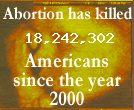Thursday, May 7, 2009
Wednesday, April 15, 2009
How to Find Men/Women Within Your Perimeter
The Drake equation (also sometimes called the "Green Bank equation", the "Green Bank Formula," or often erroneously labeled the "Sagan equation") is a famous result in the fields of exobiology and the search for extraterrestrial intelligence (SETI).
This equation was devised by Dr. Frank Drake (now Professor Emeritus of Astronomy and Astrophysics at the University of California, Santa Cruz) in 1960, in an attempt to estimate the number of extraterrestrial civilizations in our galaxy with which we might come in contact. The main purpose of the equation is to allow scientists to quantify the uncertainty of the factors which determine the number of such extraterrestrial civilizations.
The Drake equation states that:
- N is the number of civilizations in our galaxy with which communication might be possible;
- R* is the average rate of star formation in our galaxy
- fp is the fraction of those stars that have planets
- ne is the average number of planets that can potentially support life per star that has planets
- fℓ is the fraction of the above that actually go on to develop life at some point
- fi is the fraction of the above that actually go on to develop intelligent life
- fc is the fraction of civilizations that develop a technology that releases detectable signs of their existence into space
- L is the length of time such civilizations release detectable signals into space.
I guess I'm not making myself clear enough...we have to modify the equation by using the number of single men/women (i.e. the number of men/women you find attractive) which is the...
Wolowitz Coefficient = neediness x dress size squared.
Boy, do I love to watch Big Bang Theory or what? Wahaha!
Sunday, July 27, 2008
Total Solar Eclipse

it was all in the news next day that the total solar eclipse took place at General Santos City for 3 min 22sec by 9:03 a.m. that awed the crowd by its magnificent view. darkness creeps along the city like a late twilight. street lights were switched on and church bells rang with a willingness to contend.
i discovered that it takes 350 years in a particular location before the total solar eclipse takes place again. so it was great to know that i was there to witness in my batya that magnificent view.
since TSE's last visibility in 1999 in Europe that lasted for 2min 22sec, this coming friday, with the sun's magnitude of 1.039, TSE will show its enthusiasts once again in northern Canada (Nunavut), northern part of Russia, western Mongolia, and China.
unless you're still interested, a partial eclipse (moon's penumbra) will be seen in eastern North America and most of Europe and Asia for few minutes not greater than 7min (vs greatest eclipse at northern Russia for 2 min 27sec at 10:21UTC). Remember August 1, 2008, general eclipse begins at 08:04UTC.
note:

solar eclipse is the moon passing between the sun and earth (that happens merely every new moon) that occurs from 2 to 5 times a year on Earth, with between zero and two of them being total eclipses. Total solar eclipses are nevertheless rare at any location because during each eclipse totality exists only along a narrow corridor in the relatively tiny area of the moon's umbra.
Photo: Images by the J. Rodríguez, from the Mallorca Astronomic Observatory
and Amodiovalerio Verde

Monday, June 30, 2008
not so distant future
what if humans can travel faster than light or in a more average way of looking, as fast as the speed of light considering when the actual speed of light in a vacuum is exactly equal to 299,792,458 metres per second (approximately 186,282.4 miles per second)? it would be like bending time space or literally stopping the time at that given moment. then time travel can be reconsidered?
to be faster than light is adding 1m/s to c (speed of light) that incises energy as it moves. but since light has no mass and requires energy, it definitely needs infinite amount of force. so how can we really move or travel faster than light?
this one would be like cheating: slowing down the speed of light (Cherenkov Effect). it is still one of those genuine possibilities that solid objects can travel faster than light. as possible as it is, we are in perennial verge of discovering that we can move faster than light as incessantly as improving of traveling faster than the speed of sound of 343 m/s (1235 km/h, or 770 mph, or 1129 ft/s) in dry air.
it has to be repeatable and measurable as the science dictates in utmost feasible way of disproving theories. nevertheless, proving theories can only mean of blowing holes to predicted theories.
enough said. Einstein is still right and it's evident to Zeus' thunderstorms.













